Martin Provost has directed his sharp and delicate gaze on the female universe in films such as Séraphine (2008), Violette (2013), and The Midwife (2017). In the case of Bonnard, Pierre et Marthe, his latest film, the figure of the model and muse extends over the painter Pierre Bonnard showing her little by little far from the shadow of a great artist. The mysterious, self-sacrificing, in love, and sometimes primitive Marthe was a true companion of the artist and an artist herself, living a long life of passion, conflict, and deep understanding. The French painter, lithographer, and photographer, attached in his youth to the symbolist group of the Nabi, evolved throughout his career, in which a third of his works portray his life partner.
Vincent Macaigne and Cécile de France play the leading couple, supported by Stacy Martin (Renée Monchaty), Anouk Grinberg (Misia), André Marcon (Claude Monet) and Grégoire Leprince-Ringuet as Edouard Vuillard.
In this interview with Martin Provost, director of actresses such as Yolande Moreau, Emmanuelle Devos, Catherine Deneuve, and Juliette Binoche, we talk about cinema, but also about art and artists. The film premiered at the Cannes Film Festival (Premiere) in 2023 and now starts its theatrical run.
EVA PEYDRÓ: Bonnard seems to have been in your path in some way since your youth, can you tell us about the origin of the project?
MARTIN PROVOST: The origin of the project, yes, it goes back a long way, and it even goes back very, very far, but the project itself, it’s after Séraphine (2008). A lady met me, whose name is Pierrette Vernon, who happens to be the little niece of Marthe Bonnard. She had seen my film Séraphine, had been overwhelmed, and wanted me to make a film about her great aunt. I knew Bonnard, I know him well. I happen to live, a few kilometers from La Roulotte, the place where I shot the film. And, I bathe in, would say almost in Bonnard’s paintings when I’m here. And, Pierrette welcomed me into her home, there were Bonnards everywhere, but she especially showed me a painting by Marthe, a small painting, it’s true that it strangely looked like a Séraphine. At the time, I didn’t want to make a film about painting at all, I thought I had done what I had to do on that side.
I declined the offer and gave the baby, if I may say, to Françoise Cloarec, who wrote a book called L’Indolente, wonderful, where she tells the story of Marthe. I read the book, and I still didn’t want to make the film, but during the confinement, this famous confinement that locked us all up in our apartments or our houses, I found myself here, in the countryside, with an extraordinary spring, there was no noise, no more cars, no more planes, no more people, there was nature, nature in all its splendor, and I remember opening the windows of this room where I am right now. And the garden was already beautiful, very early, and I said to myself, Oh, I’m in a painting by Bonnard, I’m very lucky. Bonnard, Bonnard, I took a book, I opened the book, I came across Le Déjeuner, which I reproduce in the film, and there I saw Marthe’s blurred gaze, I looked at the pages and it struck me that on all of Pierre’s paintings, we never recognized Marthe.
And I said to myself, Well, that’s interesting, I’m not just going to make a film about Marthe Bonnard, I’m going to make a film about Pierre and Marthe, about a couple. What is a couple? What is a creation? What is the Other in a creation? And the project was born at that time, and I got to work. So, the second question is, what is the Other in a creation?

You’ve already created portraits of women in the shadows: Séraphine de Senlis and Violette Leduc. But Marthe’s darkness is deeper. It’s mysterious. For example, she goes by three different names. The real one, Marie Boursin, the invented one, Marthe de Méligny, and the artistic one, Marthe Solange. Is this the portrait of a more complex woman?
Yes, of course. Séraphine was a woman with a naïve faith who was painting flowers for the Virgin’s Day. There was something magnificent about her. I’m not saying she was simpler, because I don’t think so, but you just have to look at the paintings to see the complexity of this woman and how she managed, through painting, to bring out something in her that is exceptional. Violette was an excessively complicated, dark, and tortuous woman, who dragged people into madness.
And Marthe, she is, I would say, she’s a bit of both at the same time. That is, at the same time, the desire to paint suddenly, the will to conceal, which I don’t think she was so dark about. She had a very strong desire to get out of her condition. And at the time, we didn’t have a choice. So she was forced to tell jokes, to invent this incredible character of Marthe de Méligny. Did Bonnard believe it? I’m not sure, but he accepted her as she was because she revealed something important to him. You should know that Bonnard came from a bourgeois background, and was a man who did not have much experience with women. And Marthe, she mostly lied about what she was, because we even wonder if she was not prostituting herself.
And so she initiated Bonnard to the pleasure of the flesh, and, you know, Pierre Bonnard’s work has been completely modified and enlightened. So it’s more complicated at the same time, and it seems to me that she had a pretty clear line in her life, it’s being with Pierre, it’s loving him to the end. And for that, she made all the sacrifices, and she accepted everything, but I find that she is a revolutionary ahead of her time, what today we would call a class defector, and in her way, she accomplished something marvelous.
In addition to being a screenwriter, you are also the author of novels and plays. Is the writing of the script of your films something nonnegotiable for you? How did you find the right approach to tell this story?
Nonnegotiable, I would not say, because we must always negotiate, or we are no longer in a democracy. And in cinema, you have a lot of intermediaries. I never had so many problems with that, or my scripts were refused (laughs). And I have films that I couldn’t do, that I regret. I have a lot of drafts, my drawers are full, but that’s how it is. It’s the game, all the filmmakers go through that. And I spent time on it, so I said to myself, Is it wasted time? No, because one film leads to another. So even the script made me live an experience. And I go through that every time. And I think that even the films that I didn’t make, led me to the film that I made. Now, when I work, yes, at some point it is no longer negotiable. For example, for Bonnard, we had financial problems. It was difficult to edit the film, and because it’s an expensive film, a period film, at some point the producers told me, Martin, we’re going to have to cut, because the way it is, the script, we won’t be able to do it.
And I locked myself at home with the script, and I focused on what I wanted to say, what I wanted to show, and what I couldn’t show. I cut 15 pages. And when I see the film, I tell myself, it’s a chance. So, if you want, the negotiation, if it is done with intelligence, and you understand that it is perhaps also a sign of fate, that tells you, you can do it. Attention to this rumbling side of the historical reenactment with the streets of Paris…, I had many more urban things, I had more streets, and things like that…, but it costs a fortune. I cut everything and I symbolized everything with these paintings à la Hitchcock, that I recreated through glass, through windows. And I think that all of that, Gare de Lyon…, is much more beautiful and more cinematographic than if I had done the thing, as we do a lot today, the great reconstruction, in all its splendor.
And I think that it also corresponds very deeply to the work of Pierre Bonnard, who was someone modest, who wanted to live modestly, and who, how to say, did not seek neither glory, nor money, nor honors, but always staying… It makes me think a little bit of Ozu, as a filmmaker. And these are people that I particularly love. I hope to be in that line and stay there. And so, that’s it. All this is to say that a negotiation in a scenario seems necessary to me. And, when it is done intelligently.
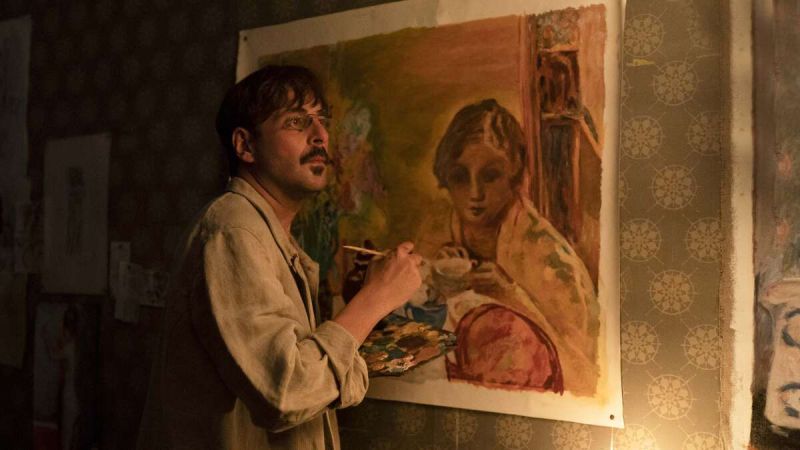
The difference between your way of filming nature and the “theatricality” of certain interiors with backgrounds of scenes and the presence of Bonnards, is obvious, but there is never a rupture of atmosphere, or tone, despite the contrast. Aesthetically, what were your choices? How did your collaboration with the director of photography Guillaume Schiffmann go?
I’m always told that there was a separate thing. There was this, there was that. It’s a whole making a film, it’s like being a conductor, and it’s directing everyone while allowing everyone to give their best and make their creation, it’s my principle. So whether it’s Jérémie Duchier [production designer] in the background, Guillaume Schiffman [cinematographer] in the light, Pierre-Jean Larroque in the costumes, and everyone, because I can’t name everyone, I’m everywhere. I don’t let go of anything. I observe everything, I look at everything, I give my opinion, I give, I say no, it’s my role, it’s necessary, and with the actors of course.
So with Guillaume Schiffman, it’s our third film together, we met a lot on the first one, which was How to Be a Good Wife (La Bonne Épouse, 2020) and we had, how to say, no…, in fact, it’s my second film with him, I only did two, there was a third that we couldn’t do. And, with Guillaume, we immediately understood each other because he is a gentle person. So we have a kind of approach to work. It turns out that his father was a painter, so painting concerned him. The film was about him. Making this film was very important to him. And we looked for, together, we did a lot of trials, we looked for a light that was raw and real. It seems strange when I talk about it, but because there is always a certain theatricality in my staging, but, because I also come from theater, but at the same time, through the light, we were looking for a truth. And I think that we were looking for a light that was real. The two met. That’s the work. It’s like in literature. It’s how the style and the background come together, how the form and the background manage to come together. And that, for me, is the order of the mystery. And for me, cinema remains a mystery. And that’s why I’m interested. Because I can’t know everything. Some things happen that go beyond me. I know I’m the medium for it. But it’s done, not by the will, but I would say by a deep inner thing, which is how you make a baby. And that, I can’t know before how the baby will be. But I put everything I am with everyone. And there was each time, and there was a rather wonderful cohesion, between the team, the actors, and everyone.
The way you show nudity as an expression of art and freedom is remarkable, especially in the most Edenic scenes. Marthe is a force of nature. The omnipresence of water (hydrotherapy, sea at the end), especially the river Seine, is more than a scene, almost a character framing love, art, friendship, and rivalry. The scene of the argument between Misia and Marthe takes on an even more symbolic meaning: The confrontation of self-aware sophistication, and materialism against the simplicity of natural intelligence and passion. How did you come to this representation of confrontation in the river?
The confrontation in the river is in front of my house. It’s there, at the bottom of it. So, it’s a place where I go every day. There’s a little bench, I sit down, and I look at this river that flows at the bottom of my house, and which is at, a quarter of an hour from the real Roulotte, where Marthe and Pierre lived. And Monet, Claude Monet, lived just above my house, behind. And so he came to paint there, on what is today, at the bottom of my house, a parking lot, a small parking lot, where we keep our cars. But in front of the parking lot, there is grass, there is a small bench, I sit down and I have this extraordinary place.
From the beginning, I said to myself, I would like to shoot there one day, leave a memory of this place where I lived for so long, I’ve been living there for 27 years, I shot Séraphine up there, I shot Violette too, I pretended it was the south, but it was here, I shot The Midwife (Sage Femme, 2017) here too, well, it’s a place that I like, and I like to shoot at home. It turns out that regarding this sequence, it is precisely part of the budget restrictions that prevented me from doing it, to find something that is better than I had imagined. I had imagined at first a lunch at Claude Monet’s, and the scene ended in the Nymphaea basin. What I found very funny was that at the end, they had Nymphaea to the neck, they didn’t know how to get rid of it, and Misia was soaking in there and in the mud. It was quite formidable on paper. And then, turn to Giverny what has become Monet’s house today it’s not quite my thing, it’s beautiful, but it’s still a fairly formal reconstruction, and it’s more of a postcard than the real house of Claude Monet. We looked for houses, if we had to reconstruct the garden, you can imagine, it would cost a fortune.
And in the end, I said, well, I’m going to have lunch at Bonnard’s, the Monets are coming, and Misia, and her new fiancé. And then it ends in the river, the fight between the two women. And I thought it was going to end there. Luckily, it was very hot that year. The river is covered with these little algae, what we call the little green things there, as there are in the fountains, I lost the name. They had water up to there [points above the waist]. So, I don’t know. Today she couldn’t shoot because she would have water up to here [points to his neck].
And we decided to do the scene that I shot quite quickly. And it seemed a lot stronger to me than the Nymphaea, because there was no Nymphaea symbol, instead, there was The origin, we all come from water, we were all in a belly, we come from a womb, and they go back to it, and it is there, in this swampy water, that Marthe, all of a sudden, is aware of such a poor environment she has. She knows what the street is, the mud, she is in her element, and from there she takes all her strength. While Misia, who is covered in jewels, swims in opulence, she has finally sought only that, finds herself, she too is confronted with reality, we’re all going to end up in the dust, decrepitude, it’s terrible, but in the end it’s just the way things are, old age is a shipwreck, before dying of a blow from a magic broom, it only happens to some people. And it seemed much more powerful to show these two women face-to-face like that in this dead arm, we call it a dead arm, in this dead water, which will allow Marthe to resurrect.
The chemistry between Macaigne and De France is intense. Did you write while thinking about these two actors?
Not at all. I didn’t write this script at all while thinking about these two actors, which is quite rare for me because I had written Séraphine for Yolande Moreau, and I had written Violette for Emmanuelle Devos. I have always written my scripts while thinking about the actresses. And there it is curious, I had no one. I thought of Vincent, but I wasn’t completely sure. I had another project with him that I couldn’t do. And so, at one point, I said to myself, Oh, Vincent, I think he’s capable of playing Bonnard. And Vincent is round and opulent, so he’s not the character. But, well, I put him on a diet. He worked a lot, we worked a lot. And Cécile de France, I didn’t have any preconceived ideas. I looked for her, I did a casting, I thought she was too old, too blonde. It was Brigitte Moidon who did the casting and insisted a lot for me to meet her. It’s true that when I saw her, we met at the Gare du Nord, at the Terminus North, I went in, I saw her, wow, it seemed obvious to me because she had…, I saw light. She has light. And that, all the actresses have that.
Does your film reformulate the concept of muse? And that of happiness as a painter of happiness?
What I’m trying to show, in any case, is that we have to put ourselves in the context of the time. We have an idealized image of the muse. Misia was a muse, but Misia was rich, could afford to ask for such and such, it was not a problem. But, for Marthe, it was different. And, to live with Pierre Bonnard without marriage and children, without any guarantee, took a lot of courage. So, I rephrase the concept of muse in the sense that it took a lot of courage. She was a woman, above all, a woman who tried to defend her beefsteak and find her place. And this ideal that we have, for me, is much more pragmatic. There were hard lives, difficult lives. Women had to find a husband to be maintained financially. When we see the world today, I say to myself, But my God, how it has changed! Fortunately, already from my mother’s time, she never worked. It was my father who worked, that’s how it was. And we didn’t discuss it. She suffered from it. But she wasn’t even aware that she was suffering from it. That’s over. Thank God, it’s over. And imagine that all these women who were painted, idealized by their painters, were happy and fulfilled. I really don’t believe it. I don’t believe it at all. I think they were lives of compromise and suffering.
Bonnard painted with his back to the model, which is very unusual. In that sense, it’s a very successful start to the film, with the ellipsis of the meeting between Marthe and Pierre. Did you aim for maximum realism in the performance of Macaigne, who had to learn to paint?
Oh yes, of course, he took courses, Marthe too, Cécile too. He had a whole training course, with Édith Baudrand, who is a painter and redid all the paintings, and it was a long journey. Now, you have to know that Vincent draws, and draws very well, so he had it in him, it wasn’t a discovery. His mother is a painter, so he has a legacy, I would say. But he has worked a lot to get to do what he does in the film. Yes, of course. It’s impossible otherwise, I had this desire in the film to show the actor is painting, and I follow his hand, I arrive on the canvas, I come back to him, all that is real. Often I see films where they cut, and it’s not him, and it bothers me because I think it’s very important to show a certain reality to accept the thing. I think it helps a lot to get into the film. Yes, it’s much more natural, too. Yes, even if Séraphine is completely fabricated, false, even if it’s a lie, there is, there is a truth that is, that must be approached, and, in any case, as far as painting is concerned, Yolande too, for Séraphine, she had taken classes and had worked, and it shows. It’s very important.

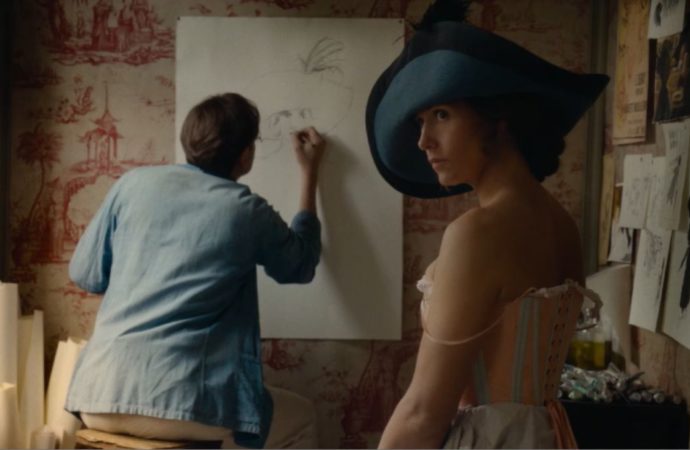
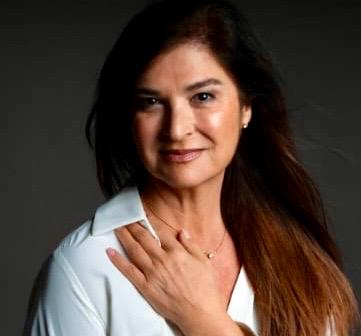

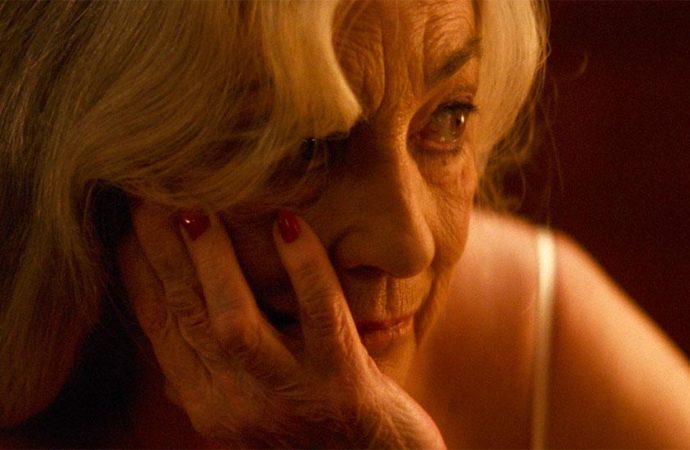
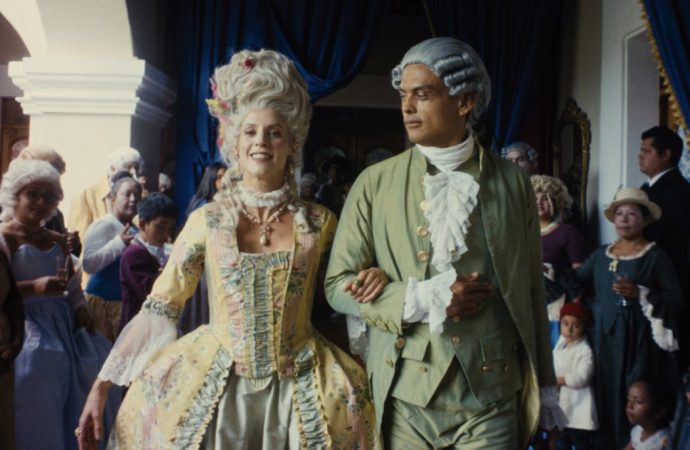



No one has posted any comments yet. Be the first person!